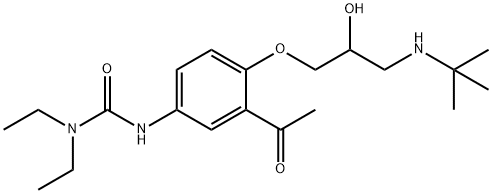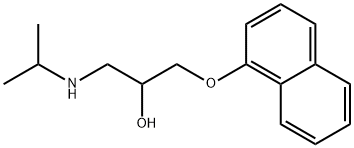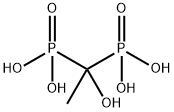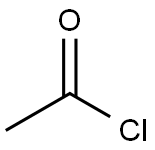Celiprolol
- CAS NO.:56980-93-9
- Empirical Formula: C20H33N3O4
- Molecular Weight: 379.49
- MDL number: MFCD00864577
- EINECS: 260-497-7
- SAFETY DATA SHEET (SDS)
- Update Date: 2023-07-12 16:51:38

What is Celiprolol?
Absorption
Absorption of an oral dose is rapid and consistent but incomplete (55% for 200 mg dose and 74% for 400 mg dose) from the gastrointestinal tract. The bioavailability of celiprolol has been shown to be markedly affected by food and one should avoid administration of celiprolol with food. Coadministration of chlorthalidone, hydrochlorothiazide and theophylline also reduces the bioavailability of celiprolol. Following oral dosing, maximal blood concentrations are reached between 2 and 3 hours.
Toxicity
No data are available regarding celiprolol overdose in humans. The most common symptoms to be expected following overdosage with beta-adrenoceptor blocking agents are bradycardia, hypotension, bronchospasm and acute cardiac insufficiency.
Originator
Selectol,Chemie Linz,Austria,1983
The Uses of Celiprolol
Celiprolol is an intermediate in the synthesis of Celiprolol Hydrochloride (C254500). Celiprolol is a cardioselective β1-adrenergic blocker. Antihypertensive, antianginal.
Background
Celiprolol is indicated for the management of mild to moderate hypertension and effort-induced angina pectoris. It is simultaneously a selective β1 receptor antagonist, a β2 receptor partial agonist and a weak α2 receptor antagonist. In 2010 a clinical trial has suggested a use for this medication in the prevention of vascular complications of a rare inherited disease called vascular Ehlers–Danlos syndrome. This study demonstrated decreased incidence of arterial rupture or dissection (a specific type of arterial rupture in which the layers of the vessel separate prior to complete failure of the artery wall). Celiprolol is not approved for use by the FDA in the treatment of vascular Ehlers–Danlos syndrome.
Indications
Celiprolol is indicated for the management of mild to moderate hypertension and effort-induced angina pectoris.
Definition
ChEBI: 3-[3-acetyl-4-[3-(tert-butylamino)-2-hydroxypropoxy]phenyl]-1,1-diethylurea is an aromatic ketone.
Manufacturing Process
3-Acetyl-4-hydroxyaniline, in solution in pyridine, is reacted with dimethylcarbamoyl chloride at room temperature to give N-(3-acetyl-4- hydroxy)phenyl-N'-dimethylurea, which after evaporating the pyridine, taking up the residue in chloroform and evaporating the latter, is obtained in a crystalline form. Melting point: 160°-162°C. After reaction of the product in alkaline aqueous solution, with epichlorohydrin, N-[3-acetyl-4-(2',3'-epoxy)- propoxy]-phenyl-N'-dimethylurea (melting point: 98°-102°C) is obtained, and this, in turn, is reacted with excess tert-butylamine in aqueous solution at room temperature to give N-[3-acetyl-4-(3'-tert-butylamino-2'-hydroxy)- propoxy)-phenyl-N'-dimethylurea of melting point: 120°-122°C.
Therapeutic Function
Beta-adrenergic blocker
Metabolism
A 14C labelled dose was completely recovered within 48 hours. The first-pass effect in the liver is insignificant. Celiprolol is metabolized to a minor extent (1-3%).
Properties of Celiprolol
| Melting point: | 110-112° |
| Boiling point: | 586.5±50.0 °C(Predicted) |
| Density | 1.114±0.06 g/cm3(Predicted) |
| storage temp. | -20°C Freezer, Under Inert Atmosphere |
| solubility | Chloroform (slightly), Methanol (Slightly) |
| pka | pKa ~9.7 (Uncertain) |
| form | Solid |
| color | Yellow Sticky |
| Water Solubility | 22.9mg/L(22.5 ºC) |
| CAS DataBase Reference | 56980-93-9(CAS DataBase Reference) |
Safety information for Celiprolol
Computed Descriptors for Celiprolol
New Products
3-Iodophenylacetic acid 3-Pyridineacetonitrile, α-hydroxy- 2-Propanamine, 1-chloro-, hydrochloride (9CI) 3-(hexyloxy)-4-(pyridin-3-yl)-1,2,5-thiadiazole 2-Hexyn-1-ol Dibenzo-18-crown-6 Nickel(II) perchlorate hexahydrate, 98% 4-Bromophenylacetonitrile, 95% 3-Bromo-4-fluoroaniline, 97% Sodium tetraborate decahydrate, 98% Palladium(II) acetate, trimer, Pd 99% 4-Bromo-2-chlorotoluene, 97% N N Dimethylformamide Dimethyl Acetal (Dmf Dma) 2,3-Dichloro Benzoyl Cyanide [Side Chain] Bis(2-Chloroethyl) Amine Hydrochloride L-Glutamic Acid Diethyl Ester Hydrochloride 5-(Difluoromethoxy)-2-Mercaptobenzimidazole 1-Ethyl-3-(3-Dimethylaminopropyl)-Carbodiimide Hydrochloride [EDC Hcl] 1,4-Napthoquinone Bromoiodomethane Sodium Bicarbonate Methylene Dichloride (MDC) Ethyl Acetate Indole-3-Carbinol (I3C)Related products of tetrahydrofuran








You may like
-
 17604-74-9 3-Pyridineacetonitrile, α-hydroxy- 98+View Details
17604-74-9 3-Pyridineacetonitrile, α-hydroxy- 98+View Details
17604-74-9 -
 131987-69-4 98+View Details
131987-69-4 98+View Details
131987-69-4 -
 2-Hexyn-1-ol 98+View Details
2-Hexyn-1-ol 98+View Details
764-60-3 -
 Cyclohexane, (2-propynyloxy)- 67967-07-1 98+View Details
Cyclohexane, (2-propynyloxy)- 67967-07-1 98+View Details
67967-07-1 -
 764-60-3 2-Hexyn-1-ol 98+View Details
764-60-3 2-Hexyn-1-ol 98+View Details
764-60-3 -
 2-Propanamine, 1-chloro-, hydrochloride (9CI) 98+View Details
2-Propanamine, 1-chloro-, hydrochloride (9CI) 98+View Details
5968-21-8 -
 3-Iodophenylacetic acid 1878-69-9 98+View Details
3-Iodophenylacetic acid 1878-69-9 98+View Details
1878-69-9 -
 132945-75-6 (S)-1-Boc-3-methanesulfonyloxy-pyrrolidine 98+View Details
132945-75-6 (S)-1-Boc-3-methanesulfonyloxy-pyrrolidine 98+View Details
132945-75-6
